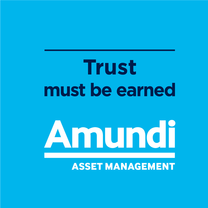Newsroom
Cross Asset - May 2019 - Investment Strategy
London, UK, May 15, 2019

Equity markets have remained buoyant in recent weeks: the S&P 500 is trending towards an all-time high, the European equity market (STOXX 600) is close to last year’s peak and the performances of emerging markets have also been very strong. Renewed hopes of a trade deal between China and the US drove the last leg of the upside, following the previous boost from the recent central banks’ dovish turns. Credit markets have also been significant beneficiaries of the positive sentiment, with spreads tightening massively in Europe and stable at tight levels in the US in recent weeks.
Market complacency seems to be the name of the game in an environment of strong financial markets amid weak real economic performance. To explain this, we should note that the global risk asset rally has essentially been driven by a single factor: inflation. The downward adjustment of inflation expectations has driven yield curves lower across the board and steered developed market and emerging market central bank policies towards dovish territory. Central banks have successfully recreated the ‘Goldilocks’ environment, which boosted risk asset returns in 2012-2017.
The question is, where will we go from here? Is the low interest rate force strong enough at this point of the cycle and at current market valuations to push the rally further? While there is little probability of seeing a reversal on this front – the low interest rate environment looks to be here to stay – we believe market sensitivity to the growth factor will increase in a late cycle phase, with a clear focus on recession risk and earnings sustainability. Consensus expectations are for double-digit earnings growth in 2020 for the S&P 500, which is an optimistic view, in our opinion. To us, the risk of disappointment looks to be significant. This means that investors should aim to enhance diversification, stay defensive and seek opportunities that could emerge in case of positive market evolution.
In the short term, three factors point to an extension of the rally: easier financial conditions, the favourable relative valuations of equities vs. bonds (the differential between the earnings yield and the 10Y government bond yield is attractive compared with historical averages since 1987), and the fact there is still some potential for price/earnings ratio expansion. Further relaxation of trade concerns, based on signs of a US-China deal possibly approaching and macro figures catching up, with the increased fiscal spending possibly passing through real activity, should support movement in this positive direction.
Therefore, we believe that while there is still some juice left, it’s not that significant, especially as markets are already pricing in some perfection.
Looking beyond the short term, the picture is rather blurry. The probability of negative returns will increase, in particular stemming from the combination of two elements. The first is that market valuations are not particularly compelling. According to our forecasts, the Shiller cyclically adjusted price-to-earnings (CAPE)1 ratio, a measure of market valuation, should drift to about 28 at the end of 2019, from the current level of 31. This projection, even if lower than the level reached at the beginning of 2018 (33), is close to 1929 figures and historically expensive. The second element is that looking at history, a material downward earnings revision (i.e., one driven by an economic recession), combined with expensive valuations, is negative for equity markets. Hence, the earnings outlook is becoming the key factor in whether or not the market continues its positive uptrend.
In balancing the short-term upside potential with these downside medium-term risks, our overall approach has been (and should continue to be) to trim the total risk in portfolios, take profits on strength and reallocate on setbacks to areas where we still see value to exploit in relative terms. In this regard, emerging markets, European equity and some segments of the credit market are the natural candidates.
Expert
Vincent has been Group Chief Investment Officer since February 2022. Previous to that, he was the Group Deputy CIO of Amundi since 2015. He is a member of the Globa[...]
Read moreAbout Amundi
About Amundi
Amundi, the leading European asset manager, ranking among the top 10 global players[1], offers its 100 million clients - retail, institutional and corporate - a complete range of savings and investment solutions in active and passive management, in traditional or real assets. This offering is enhanced with IT tools and services to cover the entire savings value chain. A subsidiary of the Crédit Agricole group and listed on the stock exchange, Amundi currently manages more than €2.3 trillion of assets[2].
With its six international investment hubs[3], financial and extra-financial research capabilities and long-standing commitment to responsible investment, Amundi is a key player in the asset management landscape.
Amundi clients benefit from the expertise and advice of 5,600 employees in 35 countries.
Amundi, a trusted partner, working every day in the interest of its clients and society
Footnotes
- ^ [1] Source: IPE "Top 500 Asset Managers" published in June 2024 based on assets under management as of 31/12/2023
- ^ [2] Amundi data as at 31/03/2025
- ^ [3] Paris, London, Dublin, Milan, Tokyo and San Antonio (via our strategic partnership with Victory Capital)
Footnotes




